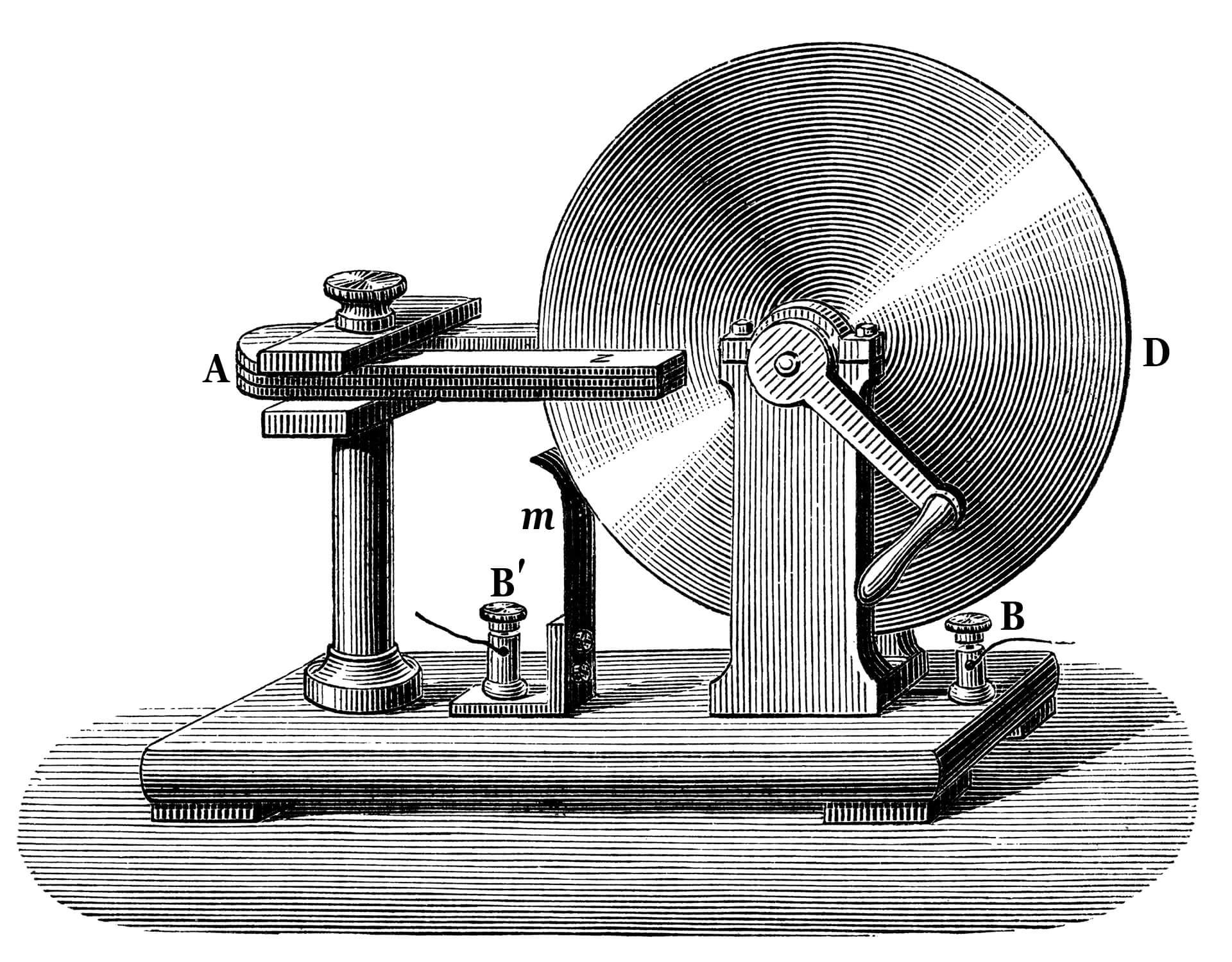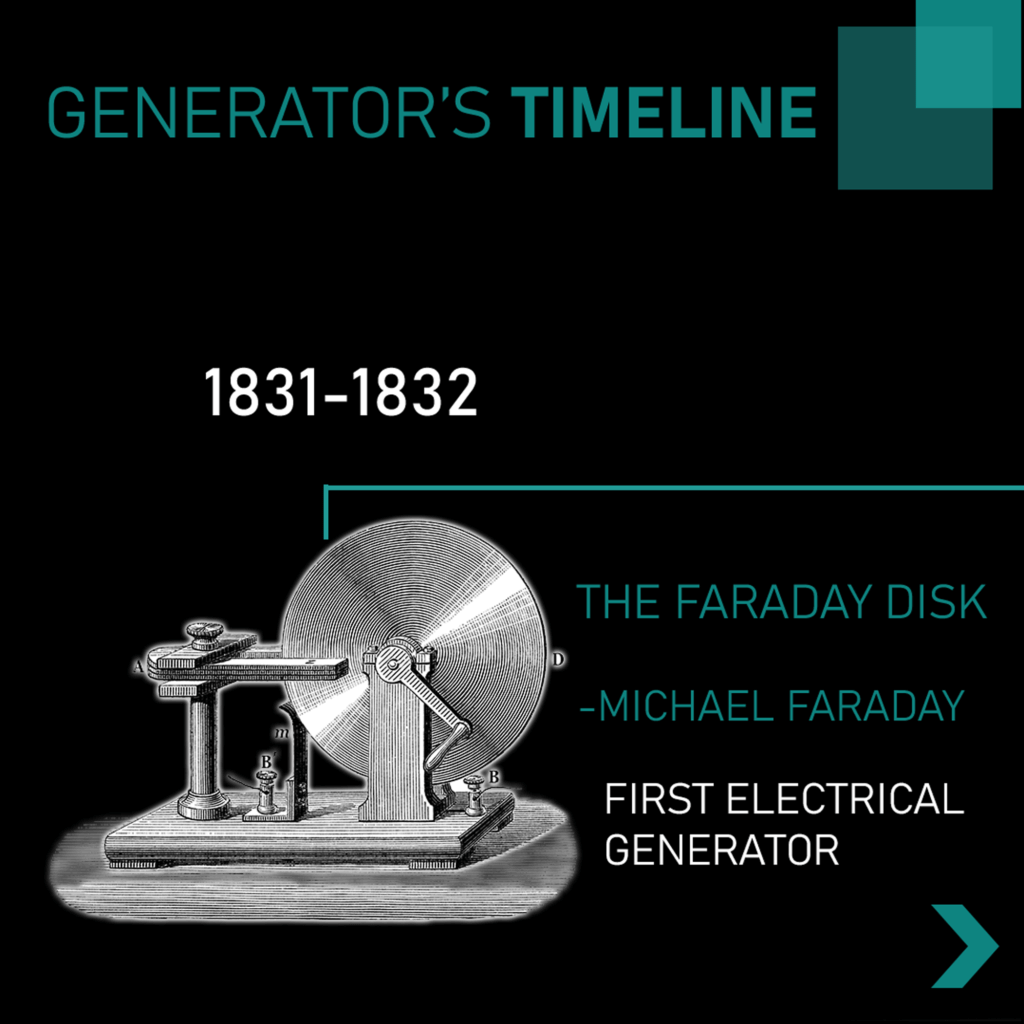The Beginning
In 1832, Michael Faraday created electricity using magnets and developed the Faraday Disk, the First Homopolar Generator with a constant, but weak current. Upon reading Faraday’s paper, Hippolyte Pixii fixed the weak current problem by spinning a U-shaped magnet faster. However, it also made the current swing back and forward faster. This created what is known as an alternating current (AC), which at the time seemed like a negative result.
As a result, Pixii resorted to France’s leading electrician Andre Ampere, who suggested to fix the problem with a “commutator”. The commutator limited the AC into a current that pulsed but only went in one direction. Still, this updated generator was not useful for a telegraph as the signal was too bouncy. However, following Pixxi’s sudden death in 1835, work on the next generator was stalled for 16 years.
16 Years Later
Floris Nollet, a Brussels professor, built a behemoth machine with 40 magnets & 60 coils. The machine produced 50 volts of potential and was called “The Alliance”. The Alliance could light up the only electrical lamp at the time, the “arch lamp”. The arch lamp was made of a bright spark between carbon rods. However, it was not practical because the commutator would spark and break.
Seven years went by and as an act of frustration they tried using it without the commutator. In 1856, they realized the alternating current (AC) would light up the arch lamp. This time was the first use of AC to generate electricity for lighting purposes.
In the 1850s, two men unfamiliar with each other’s works, simultaneously thought of using electromagnets in a generator. One of them was Samuel Varley, a 35-year-old English telegraph operator and disciple of Michael Faraday, who had been playing with generators as a hobby since he was 17 years old. By 1856, he had invented a generator with electromagnets; however, it took him 10 years to file for a patent.
While Varley might have been the first, his lack of connections became an obstacle along with the quandary bewteen him and his sibling Cromwell Varley, who was well connected and seemingly worked to eclipse his younger brother’s accomplishments.
A breakthrough: Self-excitation
In 1864, Henry Wilde, a well-connected Englishman who did not have siblings working against him, wrote about how he used electromagnets to create a generator and why he thought of it. His idea was to use a generator with magnets to create electricity. Then use that electricity to make electromagnets generate even more electricity.
Wilde had detailed descriptions of how his generator would create enormous amounts of electricity; but it would also be harder to rotate. His paper was a success, leading two scientists to credit his work. They gave him the idea of creating a generator with electromagnets powered by the generator itself.
The idea was to siphon some of the electricity produced by the generator back into the wires of the electromagnets. Then the current produced by the generator would create the magnetism. This is called, self-excitation. These feedback loops are what made the generators so powerful.
Dunamis
In 1866, Werner Von Siemens, a German scientist, discovered self-excitation. Siemens had started a company 20 years earlier called Siemens & Halske, to manufacture long distance telegraph lines in Germany. Siemens became the first company to manufacture self-excited generators, which they called Dynamo from the Greek work for power, “dunamis”. A named they used for over 50 years for their DC generators.
Samuel Varley, the guy with the mean brother, was the first one to discover self-excitation in the 1850s and even patented before even Siemens or the other scientists, as Wheatstone wrote about it. However, Varley was mostly ignored and unrecognized by the scientific community at the time.
The Dynamo generators made all the companies want to produce electricity to light up homes and cities. Nevertheless, most people used a commutator to make pulsed DC current instead of AC current. The reason? The mistaken belief that AC was more dangerous than DC. In addition to, the belief that self-excitation couldn’t be used with the AC because the electromagnets needed direct current. So, you needed a side exciter like Wilde designed. Siemens himself said, “Nothing whatsoever in Alternating Current, it is pure humbug.”
Electrifying the World
Nevertheless, in the late 1800s, there were a few brave visionaries who wanted to use AC. One of those was Nikola Tesla. In 1887, Tesla invented a multi-phase AC generator, and a corresponding multi-phase AC motor. In this system, you spin multiple separate coils around the electromagnets. The idea is that the different coils get the same alternating current, but out of step with each other. The AC is then transmitted over more wires but with significantly more power.
This multi-phase current could be used to make stronger motors, as each coil pushed different phases. To this day, we use multi-phase generators for our power plants.
After the invention of the diode, which is a one-way switch, AC and self-excitation could be used simultaneously. This is how we generate most electricity today. In fact, almost every type of electricity is created by spinning electromagnets near coils of wire.
And this is the history (or at least a summarized version) of the generator and how electricity works.
For a more detailed timeline with you can click here
For all your process optimization needs and control products, don’t hesitate to contact us!


